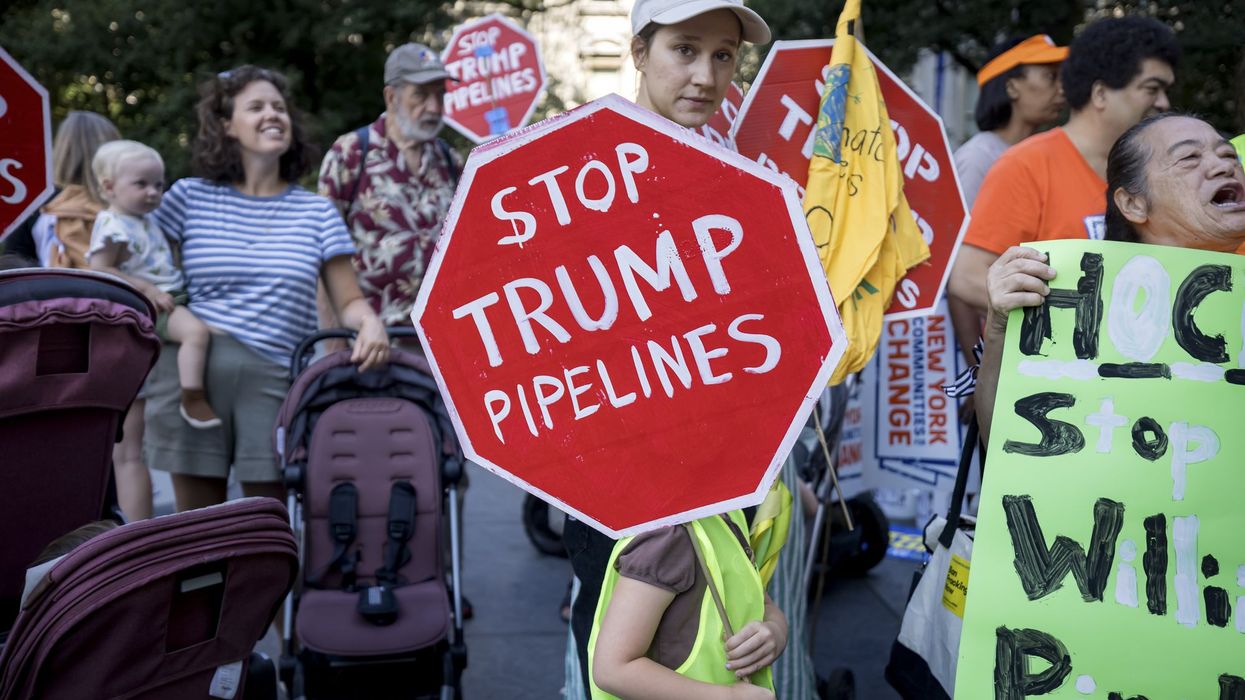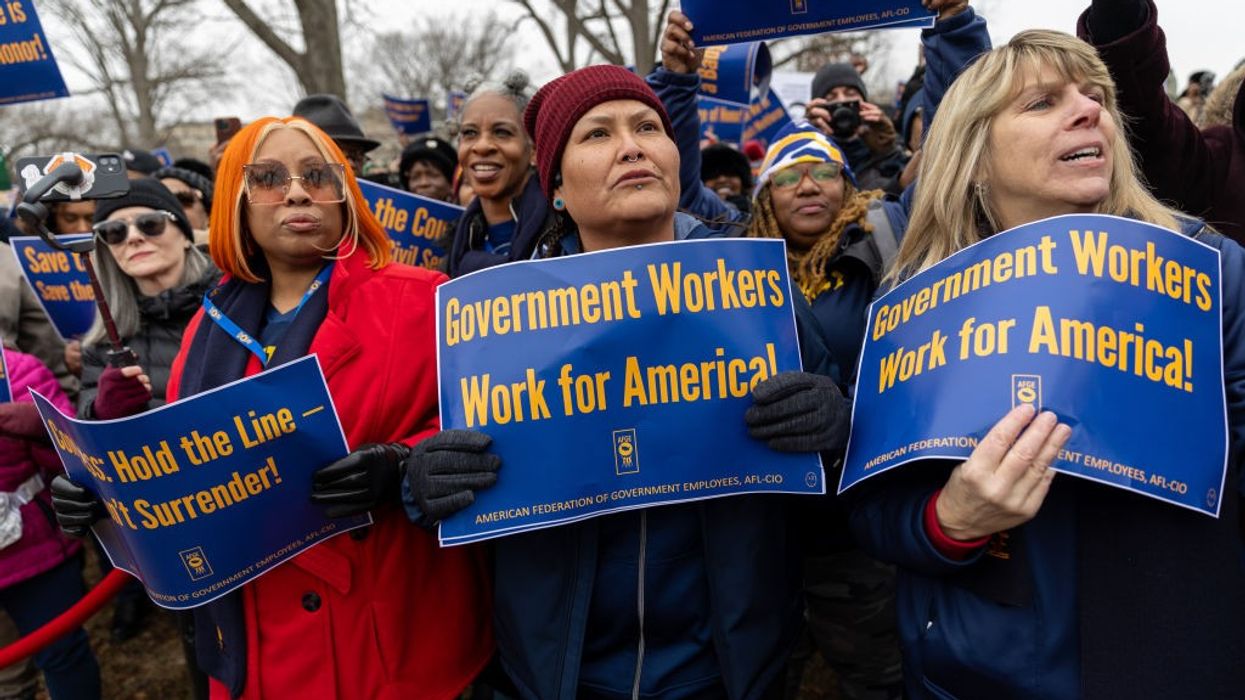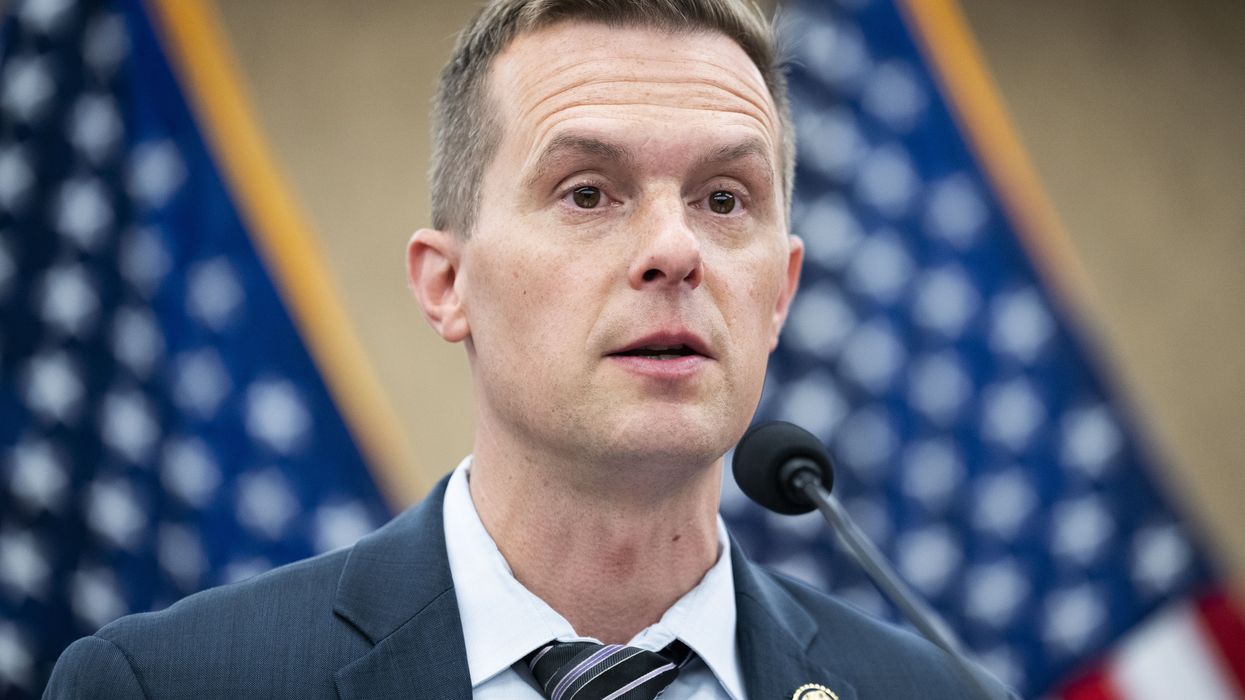11 House Democrats Help GOP Pass 'Disastrous' Pro-Polluter Permitting Bill
"The SPEED Act protects corporate interests, not the public, and it should be rejected by any senator who claims to stand with the people," said one campaigner.
Eleven Democrats on Thursday voted with nearly all Republicans in the US House of Representatives to advance a permitting reform bill that climate and frontline organizations warn is a "disastrous" attack on a landmark environmental protection law.
Democratic Reps. Jim Costa (Calif.), Henry Cuellar (Texas), Don Davis (NC), Chris Deluzio (Pa.), Lizzie Fletcher (Texas), Jared Golden (Maine), Vicente Gonzalez (Texas), Adam Gray (Calif.), John Mannion (NY), Marie Gluesenkamp Perez (Wash.), and Marc Veasey (Texas) voted with all Republicans present expect Rep. Brian Fitzpatrick (Pa.) to pass the bill.
The Standardizing Permitting and Expediting Economic Development (SPEED) Act, spearheaded by Golden and House Committee on Natural Resources Chair Bruce Westerman (R-Ark.), would amend the National Environmental Policy Act (NEPA), which "is often called the 'Magna Carta' of federal environmental laws."
In a statement after the vote, Food & Water Watch legal director Tarah Heinzen said that "for decades, NEPA has ensured logical decision-making and community involvement when the federal government considers projects that could harm people and the environment. The SPEED Act would eviscerate NEPA's protections."
The group detailed key ways in which the SPEED Act attacks NEPA:
- Drastically limiting NEPA's scope of review: Removes many actions from NEPA review altogether, potentially allowing factory farms and coal plants to build and expand without any environmental review or public input;
- Limiting agency accountability: Creates unreasonably short deadlines to challenge inadequate reviews, and limits courts’ ability to stop unlawful projects; and
- Putting polluter profits above science and the environment: Turns NEPA on its head by requiring agencies to prioritize corporate interests over the public interest and limiting their ability to consider the best science.
"Today's absurd House vote is yet another handout to corporate polluters at the expense of everyday people who have to live with the real-world impacts of toxic pollution from dirty industries like fossil fuels and factory farms," Heinzen argued. "This nonsense must be dead on arrival in the Senate."
Other campaigners also looked to the upper chamber after the vote. Erik Schlenker-Goodrich, executive director of the Western Environmental Law Center, said that "renewable energy and climate advocates in the Senate must hold the line against the SPEED Act's evisceration of our bedrock environmental and community protection law."
Allie Rosenbluth, Oil Change International's US campaign manager, stressed that "our senators must stand up against the SPEED Act's attempts to undermine democratic decision-making, pollute our communities, and threaten our collective future."
For a Better Bayou's James Hiatt similarly said that "the SPEED Act protects corporate interests, not the public, and it should be rejected by any senator who claims to stand with the people."
Anthony Karefa Rogers-Wright, co-coordinator of Black Alliance for Peace's Climate, Environment, and Militarism Initiative, warned that the bill "represents yet another assault on the health of frontline, Black, Brown, Indigenous, and poor white communities that have been designated as sacrifice zones by big polluters who bribe lawmakers with big money to continue a culture of extract, slash, burn, and emit at the expense of oppressed and marginalized peoples."
"Rather than speeding up the approval of dirty projects, Congress should increase funding for federal agencies and grassroots organizations accountable to frontline communities to carry out legally defensible and accurate environmental analyses," he continued, pointing to the Environmental Justice for All Act, previously led by the late Democratic Congressmen Raúl Grijalva (Ariz.) and Donald McEachin (Va.).
Mar Zepeda Salazar, legislative director at Climate Justice Alliance, also pointed to that alternative: "The SPEED Act fast-tracks harmful fossil fuel and polluting projects, not the community-led clean energy solutions families and Indigenous peoples across the country have long called for. Instead of pushing the SPEED Act—a bill that would strip away what few legal protections communities still have, weaken safeguards for clean air, land, and water near new industrial development, and sidestep meaningful consultation with federally recognized tribal nations—Congress should be advancing real, community-driven permitting reform."
"Examples include the Environmental Justice for All Act, which lays out meaningful public engagement, strong public health protections, respect for tribal sovereignty and consultation obligations, and serious investments in agencies and staff," she said.
Representatives from the Institute for Policy Studies, Sacred Places Institute for Indigenous Peoples, and Unitarian Universalists for Social Justice also spoke out against what David Watkins, director of government affairs for the Climate and Energy Program at the Union of Concerned Scientists, condemned as "a sizable holiday gift basket for Big Oil and Gas." He, too, urged the Senate to "reject this retrograde legislation and stand up to the deep-pocketed, polluting industries lobbying for it."
Lauren Pagel, policy director at Earthworks, pointed out that passing the SPEED Act wasn't the only way in which the House on Thursday "chose corporate interests over people, Indigenous Peoples' rights, and our environment." It also passed the Mining Regulatory Clarity Act, which "will remove already-scarce protections for natural resources and sacred cultural sites in US mining law."
"Today's House votes are a step backwards for our nation, but we continue to stand firm for the rights of the people and places on the frontlines of oil, gas, and mining," Pagel said. "Communities and ecosystems shouldn't pay the price while corporations rush to profit off extraction—with a helping hand from our elected officials."
Along with those two pieces of legislation, Public Citizen pointed to the House's approval of the Power Plant Reliability Act and Reliable Power Act earlier this week. David Arkush, director of the consumer advocacy group's Climate Program, said that the bills advancing through Congress "under the guise of 'bipartisan permitting reform' are blatant handouts to the fossil fuel and mining industries."
"We need real action to lower energy bills for American families and combat the climate crisis," Arkush asserted, calling on congressional Republicans and President Donald Trump "to fast-track a buildout of renewable energy, storage, and transmission—an approach that would not just make energy more affordable and sustainable, but create US jobs and bolster competitiveness with China, which is rapidly outpacing the US on the energy technologies of the future."


